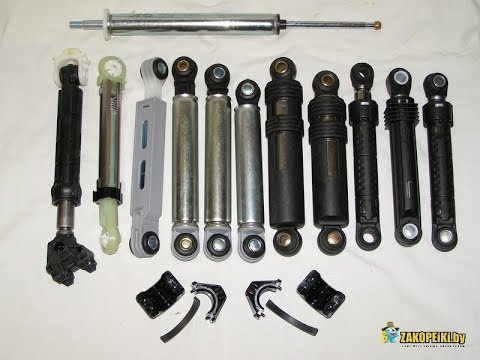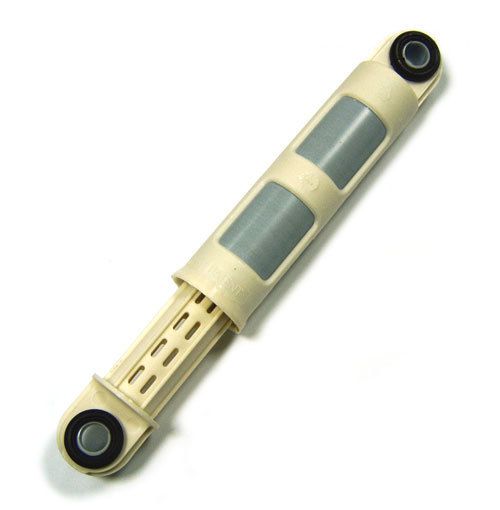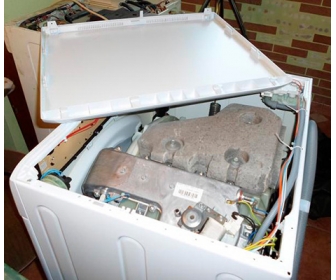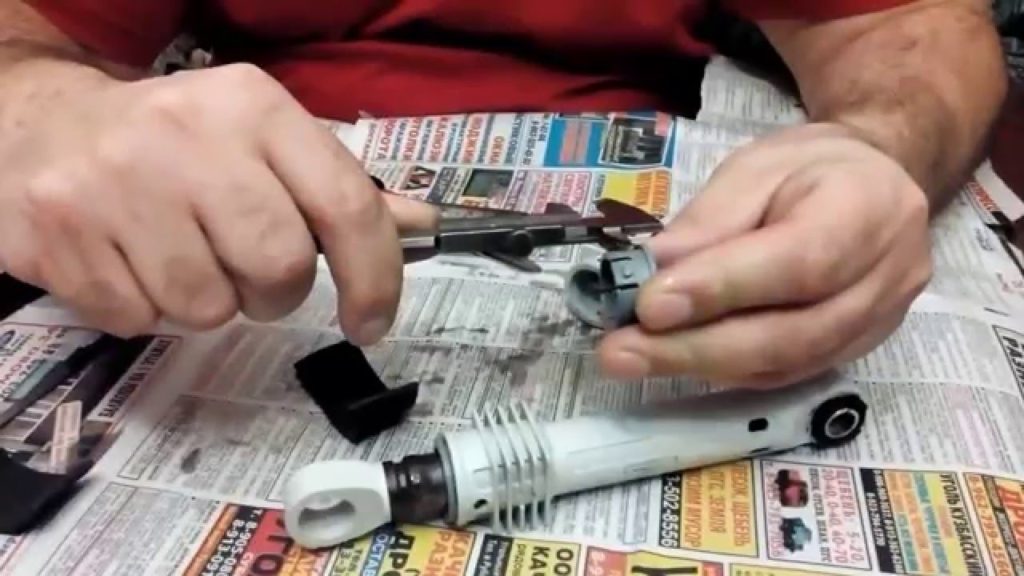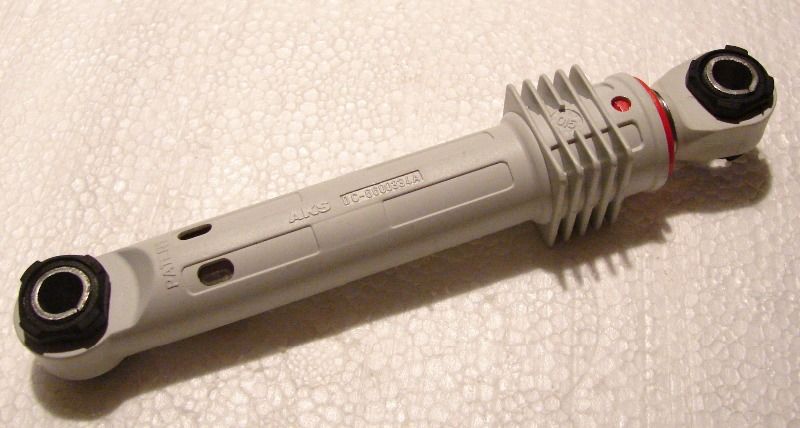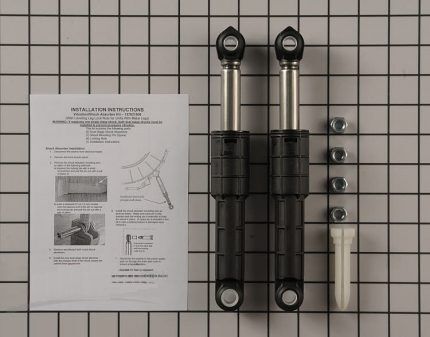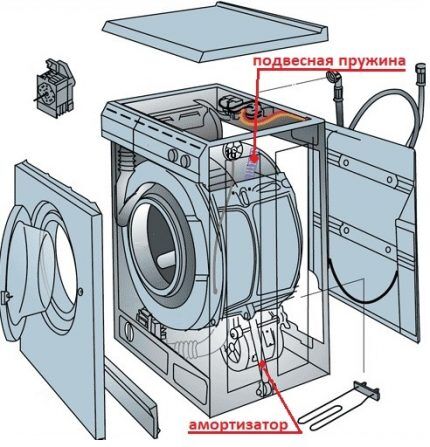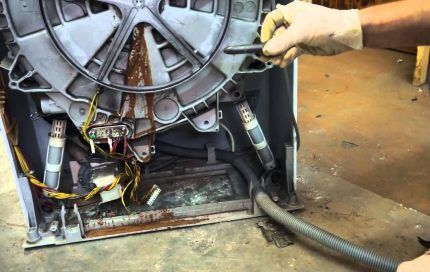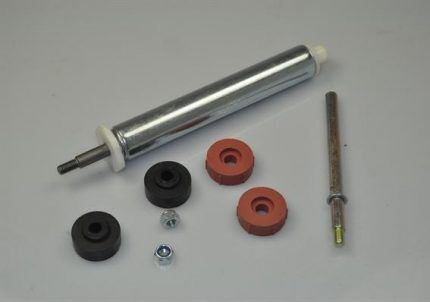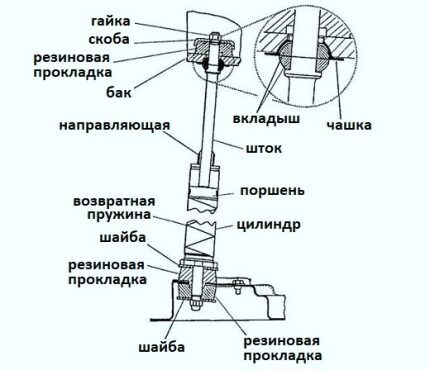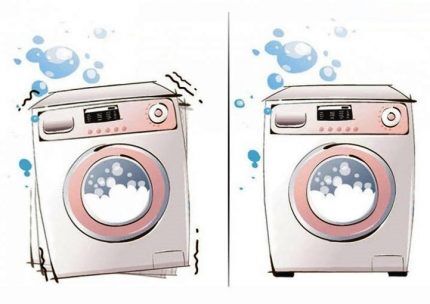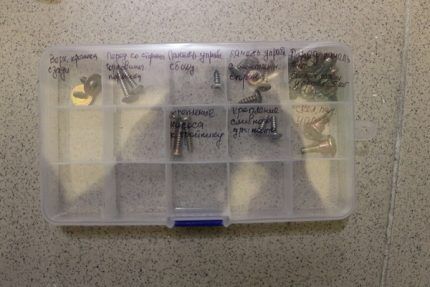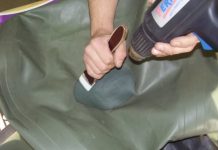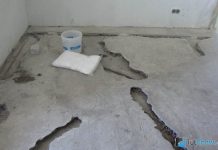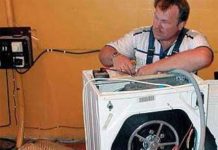In detail: do-it-yourself repair of shock absorbers of a Bosch washing machine from a real master for the site my.housecope.com.
In this article, we will analyze the principle of operation of the shock absorber of the washing machine, find out what this part is for and how to repair it if necessary. Depending on the brand of washing machine, these details may have their own characteristics.
What are shock absorbers for? They damp machine vibrations during operation, therefore they are located under the tank. When spinning at high speeds, the drum rotates quickly, the CMA begins to vibrate strongly. If there was no cushioning effect, then she would jump in place.
More modern CM models use dampers. Let's see what are the differences between these shock-absorbing parts.
Before replacing shock absorbers in a washing machine, consider their device:
- cylinder;
- returnable spring;
- piston with rods;
- gaskets.
Now let's move on to the shock absorber damper of the washing machine. The element is the same cylindrical structure, only without springs. In this case, a washing machine tank is suspended on springs. This feature contributes to better vibration damping, therefore it is used everywhere in new models.
How to independently check the correct operation of the shock absorbers? First, pay attention to the characteristic signs of breakage:
- If the part is poorly lubricated, the drum starts to rotate tightly.
- Making high revolutions, the washing machine makes a lot of noise, knocks, vibrates.
Second, diagnose the shock absorbers for the washing machine. How to do it yourself:
- It is necessary to remove the top cover of the CM. Unplug it from the mains, then unscrew the two self-tapping screws that hold the cover on the back. Push it away from you and remove it from the case.
- With a little force, press the tank with your hands so that it drops down. Now let go sharply.
- Follow the movements of the tank. If he jumped up and no longer moves, the dampers are in order. If it starts to swing in different directions, you will have to repair the shock absorber or damper of the washing machine with your own hands.
| Video (click to play). |
What caused the malfunction:
- Wear of gaskets due to frequent use.
- Defective parts, incorrect transportation of the machine.
- Malfunction of the rod that secures the shock absorber.
Whatever breakdown happens, it is important to know how to restore a shock absorber in a washing machine with your own hands. Read about it below.
Let's find out how you can get to the damper. Proceed as follows:
- Suppose you have already removed the top cover.
- Shut off the water supply and disconnect the inlet hose from the body. There may be water in it, so prepare a container in advance to drain it.
- Now you need to remove the front panel. To do this, pull out the dispensing tray: press the latch in the center and pull the tray towards you.
- Unscrew the screws that secure the control panel. Two to three bolts are located behind the tray and on the opposite side.
- Release the plastic clips.
- Take a photo of the location of the wires on the panel and disconnect them, or place the panel on top of the CMA case.
- Open the hatch door. Having bend the sealing rubber, pry the metal clamp with a screwdriver, remove it.
- Insert the cuff into the drum.
- Unscrew the hatch lock bolts (UBL).
- Disconnect the wiring from the locking device, pull it out.
- Release the latches on the panel at the bottom where the drain filter is located and set aside.
- Unscrew the screws securing the front panel and remove it.
- Put a nut on the back of the stem mount to disengage the latch.
- Grasp the stem with pliers and pull it towards you.
- Now unscrew the bolt at the bottom.
Some users are wondering: how to check shock absorbers when buying? The same as when replacing. Squeeze and unclench the part in your hand: if it is difficult to do this, then the product is working properly. If you squeeze the shock easily, it needs to be replaced.
Note! Even if only one damper is faulty, both must be replaced at once.
How can you repair a shock absorber in a washing machine with your own hands? First, pull out the insert that slows down the movement of the stem. If the stem moves quickly and easily, the insert (gasket) is most likely worn out. To replace it:
- Take a 3mm thick belt.
- Measure the length according to the diameter of the hole.
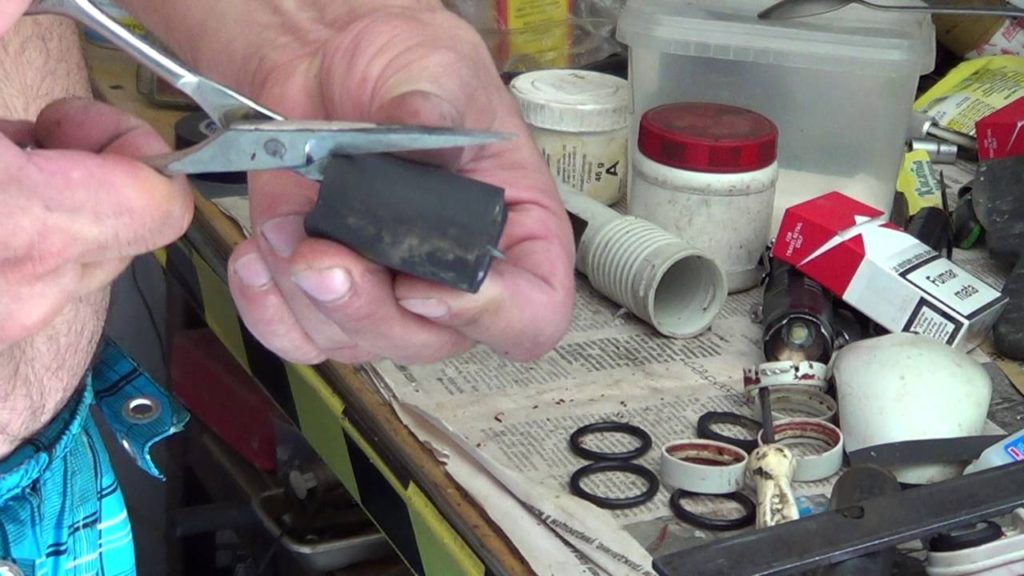
- Insert the cut piece of belt over the seal so that the edges fit snugly together.
- Before installing the stem, you need to lubricate the part to reduce friction. If you do not know how to lubricate the shock absorbers of the washing machine, use a regular oil-lubricant.
- Install the stem. Now you know how to fix a washing machine shock absorber.
For more information about the repair, see the video:
Parts may differ in different CM models, so don't buy at random. In the store tell the brand and model of the washing machine to the seller, and he will suggest you suitable items. Or go shopping with an old damper. Be sure to select a suitable spare part before replacing the shock absorbers on the washing machine.
Another complication. In some models of washing machines, in order to dismantle the dampers, you will have to pull out the tank with the drum.
To install, first insert the rods while securing the top. Then tighten the bolt at the bottom, assemble the machine. The repair is over. Having figured out how to change and check the shock absorber on the washing machine, you can start working on your own. Buy new parts or repair old ones - the choice is yours. The video will help you:
We are used to relying on service centers to restore the technical capabilities and performance of household appliances. However, not all breakdowns require the mandatory intervention of the master.
Many minor problems can be easily fixed with our own hands. One typical example is repairing the shock absorbers of a washing machine, which you can do yourself.
Depending on the settings, the brand of the unit and the functions performed, the drums of the washing machines perform from 700 to 1800 revolutions per minute. Such an impressive load, and even with the application of a rotating force, can easily disable the contacting parts, weaken the nodes and joints.
If shock absorbers had not been developed that damp the vibration of the drum and the tank containing it during the spin cycle, the machine would have to be repaired after each next "session" of washing. Their purpose is no different from the functions of similar car devices.
Shock absorbers, coupled with suspension springs, exclude direct contacts of the drum of the machine with its metal body, steel and plastic parts. In the form of a kind of support, they are located under the main rotating body of the equipment, which is fixed in the upper part of the unit by suspension springs.
During the operation of the washing machine, the supports and springs are unstable, due to which the tank rotating at a breakneck speed can slightly shift relative to its rest position. Those. These devices, making spring movements, provide the drum with the ability to perform the turns set according to the status, without transferring the load to adjacent parts and assemblies.
The structural components of the washing machine, protected from vibration by shock absorbers, last much longer, and are less likely to fail. True, the shock-absorbing devices themselves gradually lose their original strength during the execution of the assigned task.
Used devices may require repair or replacement at an extremely inopportune moment, for example, before an evening wash, the time of which does not allow calling the master urgently. Or it will take a long time for his arrival. This is where you need information about the specifics of the restoration of shock absorbers and about their design.
One of the most common options for shock absorbers for washing equipment has a so-called spring-piston design. To put it exaggeratedly, it is a metal cylinder, at the top of which is a polymer sleeve. It directs the movement of the rod installed in the shock absorber.
The upper part of the stem is "sharpened" for the fit of polymer liners and rubber gaskets, with the help of which it is connected to the drum. Attached to the base of the rod is a piston with a gasket heavily impregnated with non-drying grease. This lubricant is needed to increase the frictional force when the rod with the piston moves along the cavity of the steel cylinder.
The operation of a spring-piston type shock absorber includes a number of sequentially repeated actions:
- In case of sharp vibrations, the shock absorber rod is set in linear motion.
- The piston squeezed by the rod moves along the cylinder cavity.
- The impregnation prevents the piston from slipping without adequate force.
- When the pressure is released, the stem returns to its original position.
- When an effort arises, everything is repeated.
To prevent the air in the cylinder from creating additional resistance, the piston is perforated. When you press on it, a possible airlock easily comes out through the holes made through.
Of course, such a mode of operation gives no reason to hope for the eternal preservation of parts rubbing against each other in their original technical condition. At first, there is simply a backlash, then wear. Moreover, only one spring support can be damaged, and sometimes they are in different modifications of washing units from 2 to 4 pieces.
The principle of operation of shock absorbers for washing machines of various brands is similar, but there are some design nuances. Their size, angle of inclination, location may differ, not in all models of washing equipment they are supplemented with springs holding the drum on top. Instead of a pair of overhead hangers, small springs can be used, connected to a nearby upper counterweight.
In other configurations, the two-piece tank is supported from below by dampers instead of shock absorbers. This constructive type is classic, therefore it is also very worthwhile to understand the structure of these devices. It is possible that this is exactly your case.
Dampers in the device of washing machines are also used in combination with suspension springs, however, there are no conventionally not very strong elements in their structure. In fact, this is also a steel cylinder, although it is not a rod with a piston that moves along its cavity, but simply a piston with holes in the walls to remove excess air.
The damper piston is also equipped with a friction-type gasket. It is made of a porous polymer and impregnated with a non-drying lubricant that creates additional friction. There can be two or even more gaskets in the damper, it all depends on the characteristics of the device.
Both the metal cylinder and the damper moving along its cavity are equipped with rubber bushings along the outer edges, with the help of which the shock-absorbing devices are connected to the bottom of the machine and to the tank.
Dampers are available in two versions:
- Collapsible. To repair this variety, most often it is enough to simply replace the pressed gasket.
- Non-collapsible. Their edges are seamed. Repair of this type consists in replacing the device.
The values of the maximum allowable force possible for a particular damper device are indicated on the damper or damper housings. Typically, the load varies in the range of 50 - 150 Newtons.When operating in the mode guaranteed by the manufacturer, washers rarely exceed these limits.
When buying a new shock absorbing device for replacement, do not exceed the characteristics indicated on the previous part. If 100 N is indicated on the case, then you do not need to delude yourself that an element with 150 N will last longer, you need to purchase exactly the same or with similar indicators.
Damping devices of washing machines belong to the mechanical part of household equipment. Their repair and replacement does not require fundamental knowledge of electrical and even mechanics. This means that even the intervention of an amateur cannot cause serious damage.
Note that a unique technical documentation is issued for each model of the washing unit. Service receptions are usually authorized, devices are patented. However, there are methods for repairing shock-absorbing devices that are common for almost all types of washing machines, the specifics of which are worth understanding.
The appearance of typical damages to shock absorbers or dampers will be signaled by a specific noise that occurs during the operation of the machine, too strong a knock inside its body.
When detecting alarming sounds, you should study their state, and for this you need to provide yourself with access to the tested devices. Depending on the model, you will need to remove either the top panel, the side panel, or the back panel for examination.
Diagnostic methods for shock absorbers for washing equipment depend on the type of load:
- From the front. If, when a force is applied to the tank from above, folds form on the sealing collar of the loading hatch, the shock absorbers will have to be replaced. By the way, you can notice a couple of folds while the machine is running with worn out accessories.
- Vertical. If, when a force is applied to the tank, no resistance is felt from above, and the tank continues to swing like a pendulum after the pressure is interrupted, it must be repaired.
During diagnostics with top loading, it is imperative to pay attention to how much the tank sags when pressed, if the indicated defect takes place. It would be nice to track the fact of sagging and its conditional value with a full tank load.
It is imperative to check whether there is at least some reserve for the reciprocating movement of the tank of the examined washing machine. If it sags so that there is simply no room for it to move during vibration, then a loud knock will appear during washing or spinning. And this is a sure sign of damage to the tank in the near future, and just an imbalance.
In the normal technical condition of front-loading washers, cuff folds should not be observed at all, regardless of the function being performed. Note that the formation of a single crease on this rubber seal indicates that only one of the shock absorbers is damaged.
For normally functioning units with a top load, if the shock-absorbing devices are not damaged, after a force is applied to the tank from above and the load is suddenly interrupted, i.e. removal of the hand, the tank should smoothly return to its original place without unnecessary swinging and vibration.
A washing machine with a damaged shock absorber or a worn out damper seal, of course, can still work for some time without carrying out repair operations. But it should be remembered that without vibration damping, any extremely important parts and mechanical systems can split or become disconnected. The tank and piston assembly suffer the most from this.
If noises and heavy knocks are detected in a washing machine with dampers, it may be enough to change the sealing gaskets. To do this, you just need to disconnect the device and, according to the sanitary rules, simply cut out new gaskets from textolite or a piece of rubber of suitable thickness.
A used rubber brake pad for a car is an excellent starting material for manufacturing.It is better to choose the rubber thickness according to the actual size of the gap between the tank and the shock-absorbing device.
In the overwhelming majority of situations, the shock absorbers of washers must be completely replaced. Moreover, repairmen advise changing the entire set, and not just one device.
There is logic in the statements of experienced craftsmen. Indeed, in the working process, all shock absorbers wore out approximately the same. After replacing only one device during the washing / spinning period, the vibrations will be damped unevenly, which will very soon lead to breakage and abrasion of previously undamaged elements.
If the broken devices can be simply disconnected from the lower plane of the washing machine and from the tank, the work is carried out without much difficulty.
- We remove and remove the part of the case located on the side necessary for repair.
- We dismantle damaged and out-of-order devices.
- We install a new kit and assemble the washing machine in the reverse order.
There are models in which the attachment to the tank is made in such a way that dismantling is possible only with this element. The owners of such equipment will have to almost completely analyze the equipment before repairing. In any case, before proceeding with the repair actions, it is worth looking into the data sheet and familiarizing yourself with the fastening features.
To replace the dampers in such machines, they have to be almost completely disassembled.
Having completed the disassembly of the case, we proceed to remove the tank of the machine, at the same time we clean the parts from rust and calcium build-up. In order not to get confused in the actions that will need to be repeated exactly during the reassembly process, we record all the stages with the phone camera.
The work is carried out in the sequence given below:
- Remove the case panel from above.
- We dismantle the box for loading liquid products and powder.
- We delete the control panel along with the systems adjacent to it.
- Separate the springs holding the tank at the top.
- We remove the front panel and disconnect the functional units of the machine from the tank.
- We take out the tank together with the dampers.
- We make the replacement of devices, if possible, we get off with the replacement of gaskets or repairs.
- We assemble the machine, strictly adhering to the parsing sequence, only in the reverse order.
In order not to make mistakes in the assembly process, it is advisable to photograph the disassembly process.
For fasteners, it is better to make an auxiliary "organizer" with several cells, which can be signed along the way.
A roller with detailed instructions for replacing shock absorbers:

